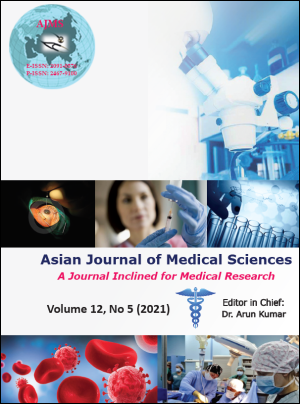A study on the age related anatomical variations of some of the cerebral cortical sulci of human brain
Keywords:
Sulci, Gyri, Depth and Width of sulci, MRI images, AgingAbstract
Background: The sulcal patterns may be useful in studying the mechanisms of both neuro developmental and neuro degenerative changes that occur during brain maturation and ageing. Magnetic resonance imaging has facilitated the non-invasive study of human cerebral and cognitive development.
Aims and Objective: To find out the age related anatomical variations of some of the cerebral cortical sulci and gyri of the brain.
Materials and Methods: The study was done using the MRI images of brain of normal healthy adults aged between 20-70 years. A total of 200 images were analysed consisting of that from 119 male subjects and 81 female subjects from the Department of Radiodiagnosis, Government Medical College Kottayam.
Results: Using statistical analysis it was found that as the age advances there was decrease in the depth, in case of central sulcus, pre-central sulcus and post-central sulcus. The width of the pre-central sulcus and post-central sulcus was found to increase with age. The changes in the width of the central sulcus were not significant.
Conclusion: The observations of the undertaken study indicated that age changes do occur in the sulci of
the brain and there was a sequential change in relation to the different periods of adult life. These changes are probably due to the volume loss of the brain due to the atrophy that occurs during aging.
Downloads
Downloads
Published
How to Cite
Issue
Section
License
Authors who publish with this journal agree to the following terms:
- The journal holds copyright and publishes the work under a Creative Commons CC-BY-NC license that permits use, distribution and reprduction in any medium, provided the original work is properly cited and is not used for commercial purposes. The journal should be recognised as the original publisher of this work.
- Authors are able to enter into separate, additional contractual arrangements for the non-exclusive distribution of the journal's published version of the work (e.g., post it to an institutional repository or publish it in a book), with an acknowledgement of its initial publication in this journal.
- Authors are permitted and encouraged to post their work online (e.g., in institutional repositories or on their website) prior to and during the submission process, as it can lead to productive exchanges, as well as earlier and greater citation of published work (See The Effect of Open Access).




